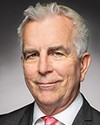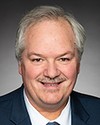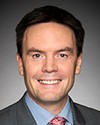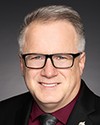Thank you very much, Mr. Chair.
I'd like to turn this question to Elisabeth Pilon.
Ms. Pilon, thank you so much for recounting your personal journey through this.
When you look at Bill C-277, there are requirements as a part of this national strategy to promote information and knowledge sharing, specifically with respect to brain injury prevention, diagnosis and treatment, along with rehabilitation recovery. There is reference to national guidelines, which would include recommended standards of care that reflect the best practices that are out there.
However, there is also a requirement to develop and provide enhanced and integrated mental health resources for persons living with a brain injury. All of these are legislative requirements of a national strategy that the federal Minister of Health has to develop with provincial and territorial counterparts.
You've told a very personal story about what it was like with the lack of resources that you had, and the long journey you've had to go through. If this kind of strategy, with these kinds of requirements, had been in place at the time you needed it most, what difference would that have made for you personally? Can you speak about people who are just beginning their journey right now and what kind of difference it would make for them as well?





